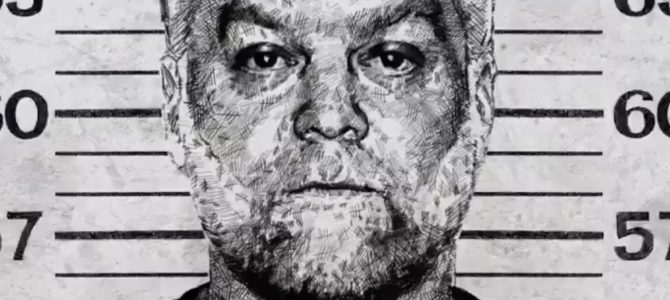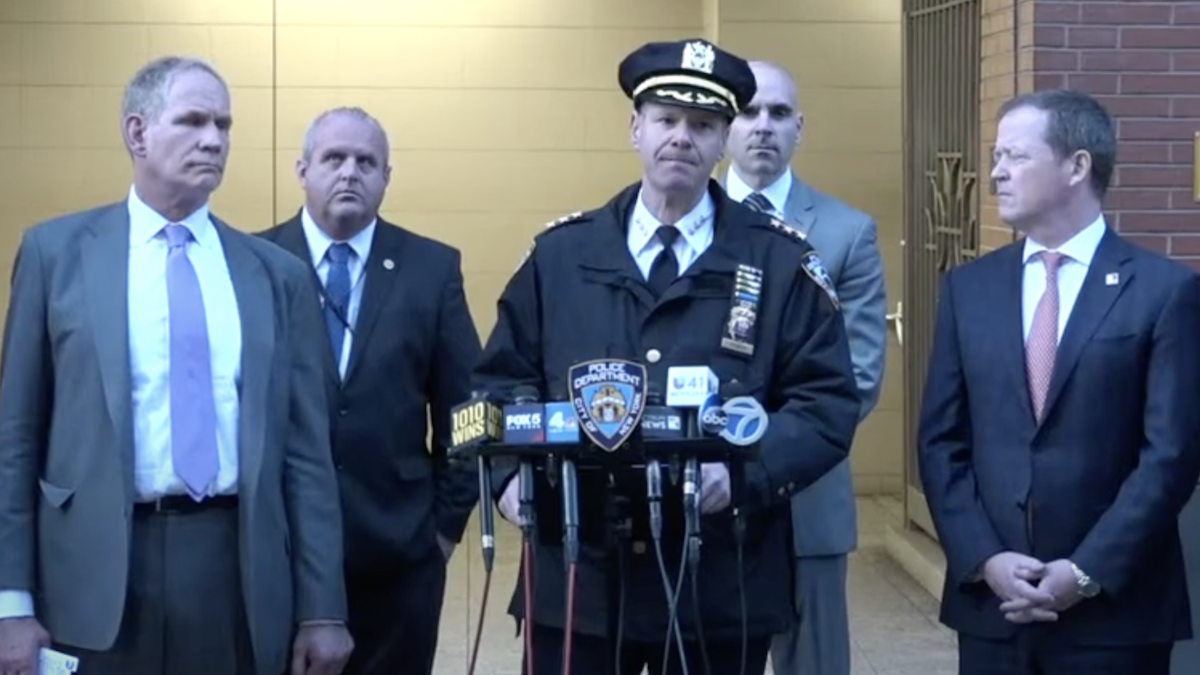If you haven’t watched the first season of “Making a Murderer,” none of this will make any sense to you. If you haven’t watched the second season of “Making a Murderer,” consider yourself lucky. Everything below is a spoiler.
I should start by noting that the popular first season of “Making a Murder” was a transparent work of advocacy journalism. It set out to prove the innocence of Steven Avery, who spent 18 years in prison for another crime before exonerated by DNA evidence, then later convicted of the gruesome murder of Teresa Halbach. It failed. Although the second season is comparably unconvincing, its biggest drawback isn’t that it breaks little new ground but that, unlike the first season, it’s also insufferably boring.
In the first episode of Season 2, Kathleen Zellner, Avery’s new noted Chicago post-conviction lawyer, says the state’s entire case will collapse. Zellner promised that the murder conviction would be vacated, and that she would take great personal pleasure in unmasking prosecutorial abuse and planted evidence. None of this happened.
Zellner, who had exonerated 19 men in the past, is no joke. Then again, she took the Avery case only after it became a national story. Before then, she ignored the family’s pleas for four years. She probably did so for very good reasons. While Zellner spends a bunch of time highlighting deficiencies in law enforcement procedures and professionalism—many of them concerning and genuine—she does nothing to prove Avery’s innocence.
A person can get bogged down in every theory Zellner unfurls during Season 2 and forget how farfetched the overall defense of Avery really is. Rather than reviewing all the minutiae of Zellner’s claims—many of her boldest ones don’t even rely on evidence, but you can judge for yourself— it’s worth remembering all the conspiracies we have to accept to believe Avery to be set up for the murder. None of them have really changed from the first season.
Let’s Go Through Those Conspiracies
First off, viewers still have to accept that Halbach’s body was moved onto Avery’s property by members of the Manitowoc, Wisconsin police department, or someone else hoping to frame him, then burned in a firepit in front of his home—with other murder tools belonging to Avery—without anyone on the busy property noticing.
Zellner adds another layer to this aspect of the story by claiming that the body was burned somewhere else and then moved to the fire pit. So the Manitowoc police, or the real killer, murdered an innocent women (one Avery happened to be obsessed with), stole his tools before the murder took place, and moved everything to the fire pit before the police showed up. Okay.
But the viewer is also asked to believe that police (or some steely nerved mastermind killer who, as far as we know, has never struck before or after) snuck into the Avery home, and not only planted the keys to Halbach’s car in his trailer but also planted Avery’s non-blood DNA onto those keys (as Zellner claims). All of this had to be premeditated, as well, since it had to have happened before the police searched Avery’s trailer and before they had a chance to plant any DNA evidence on the key.
Zellner disputes that DNA evidence on the key. She says it was planted. She says someone also planted Avery’s non-blood DNA evidence on the inside latch of the trunk of Halbach’s car (and blood in half a dozen places elsewhere in the car) after dumping the car on the property without anyone noticing. All of it before the police showed up.
That exhibits tremendous forethought. But the viewer still has to believe, on top of all of this, that the police devised a way to plant more DNA evidence onto the ammunition casings found in the Avery garage, which was not only linked to Halbach but forensically tied to Avery’s gun. This means that that cops, or another murderer, got their hands on a rifle that hung over Avery’s bed, fired it without any of the family’s knowledge, shot a woman in the garage without anyone’s knowledge (or maybe they transported Avery’s gun somewhere else and shot her), then also planted the forensic evidence without anyone’s knowledge. All before the police showed up.
Quite a feat. Turns out, the Manitowoc police are either incompetent or criminal geniuses. What’s more, not a single one of the people involved in all of these intrigues has ever slipped up once after all these years.
That’s Not Even Half of It
Viewers of “Making a Murderer” must also ignore that Avery not only called Auto Trader and specifically requested Halbach, who was a photographer with the company, to take pictures of his car the day she was murdered, but that he did so using a false name to trick her to show up. She had been there once before, and Avery had scared her. Avery called Halbach’s personal cell phone three times the day she was murdered, twice using *67 to obscure his identity, and only once using his own number — after she was already dead, in a transparent alibi attempt. (All of this was conveniently unmentioned in Season 1.)
Avery, who initially claimed that Halbach had never shown up—a weird thing to lie about for an innocent person—was the last known person to see her alive. An Avery family member, Bobby Dassey—more on him in a second— testified that he witnessed Halbach arrive on Avery’s property to take pictures of the car, and that he watched Halbach “walking over” to Avery’s trailer.
Why would Dassey lie? Well, Zellner wants us to believe that it was Dassey who murdered Halbach. You can believe that cops might be lazy and focused on the wrong man, or that prosecutors railroaded that man because they were harboring a grudge, but how would the police know to plant DNA evidence on the car, the casing from the rifle, and Halbach’s keys to help Dassey? Unless, of course, you believe Dassey could get his hands on Avery’s blood and non-blood DNA and plant it himself without leaving a single fingerprint or bit of DNA, or any other evidence, behind.
Steven Avery Has a Violent, Twisted History
The Bobby Dassey theory revolves around a Zellner accusation that he had erased files from a computer that contained “images of Ms. Halbach, violent pornography and dead bodies of young females viewed by Bobby at relevant time periods before and after the murder of Ms. Halbach.” We have no idea if this is true. But if this speculation is, in fact, important, it’s also worth mentioning that Avery isn’t the sweet and innocent man the show portrays, but a person with a long and disturbing history of violence, including an episode where he doused a cat in gasoline and watched it be burned alive for entertainment. Season 1 described this incident as a youthful indiscretion, leaving out the specifics.
Then there is Avery’s history of fetishizing sexual violence. Avery told an inmate during his first stint in prison that he was looking forward to constructing a “torture chamber,” one he had drawn up plans for, so he could rape, torment, and murder women. Of course, these last two things don’t make Avery guilty, but they are just as pertinent as most of the other things the documentarians do focus on.
Then there is the confession of Brendan Dassey, also convicted in Halbach’s murder, who is Avery’s nephew and Bobby’s half-brother. Zellner claims early in Season 2 that detectives “planted” the murder story in “[Brendan] Dassey’s brain.”
There are problems with Dassey’s confession, which many people rightly claim was coerced (even criminals have constitutional rights that should be taken seriously). It is also true that many people give false confessions for a number of seemingly inexplicable reasons.
Yet, if you’re really into the case you can read entire transcript of the questioning (1 and 2). There was plenty of bullying. Nothing, however, was planted. Dassey’s detailed narrative (from a teen who supposedly never left his room) matched the forensic evidence. Dassey knew exactly where the gun was used without anyone telling him. Dassey knew exactly where Halbach was killed. No one planted that in his head.
So you would need to believe all of these incidents, confessions, DNA, cars, and casing were part of wideranging set-ups to also believe Avery is innocent. The gun alone would have probably been enough to convict him. The body alone probably would have been enough to convict him. The car and blood would have been enough to convict him. The Dassey confession would be enough to convict him. The calls, in conjunction with the witness seeing Halbach heading towards the trailer, might have been enough to convict him. Murders are often convicted without any physical evidence at all, for that matter.
No court has ever bought any of the conspiracy theories about alternative murderers. There has been one appeal after the next. Are all these courts in on the conspiracy, as well? Now, maybe one day exculpatory evidence that the public isn’t privy to will emerge. There are, after all, many innocent people in jail (although it’s difficult not to notice that Avery’s lawyers want you to ignore the same kind of DNA evidence that once exonerated him). As it stands, though, Steven Avery isn’t one of them, no matter how many seasons of “Making A Murderer” they squeeze out.









